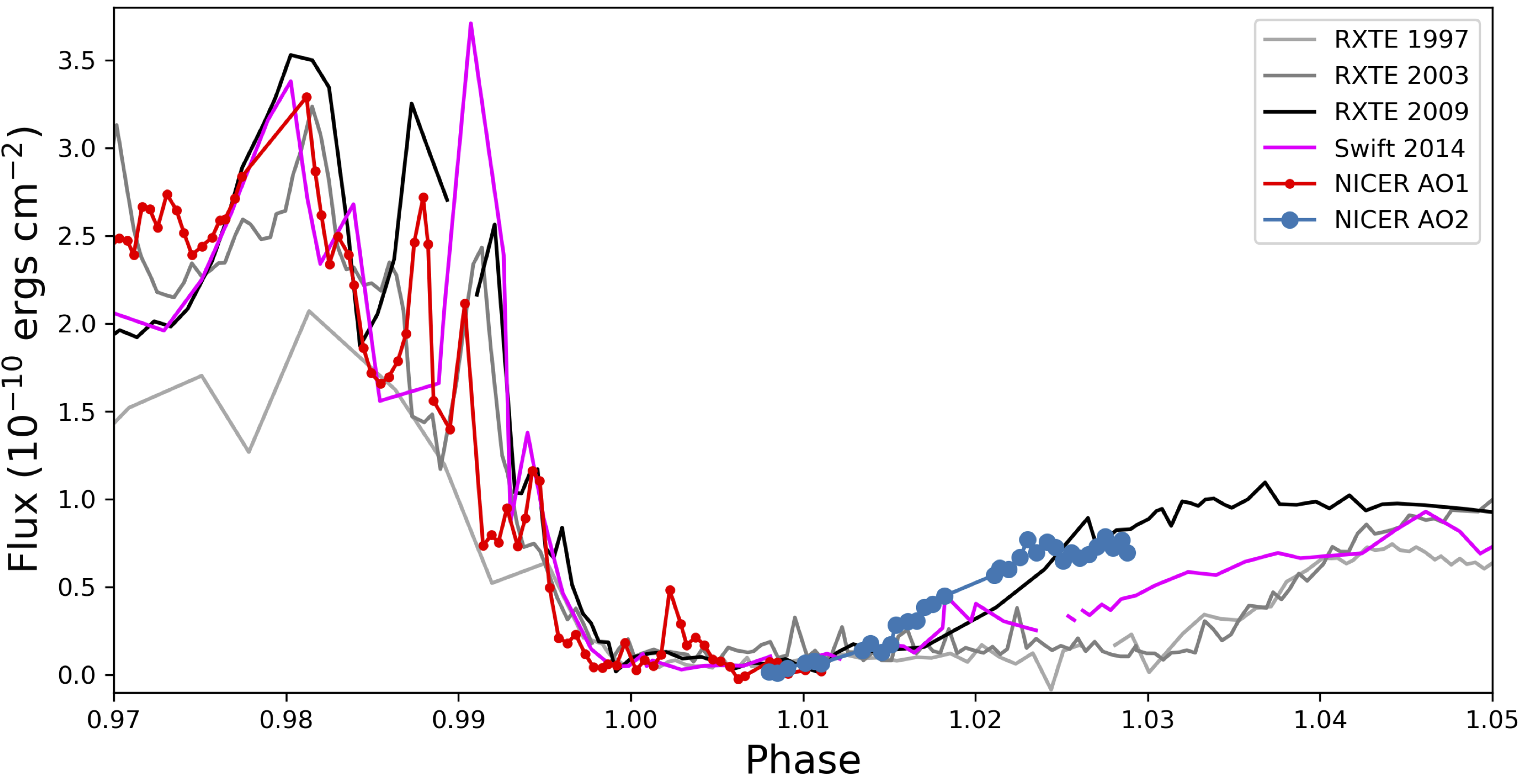NICER / ISS Science Nugget
for April 16, 2020
The Sudden Re-appearance of Eta Carinae
Eta Carinae is one of the most massive binary star systems we know, and a powerful stellar X-ray source. It's well
known for a giant eruption in the 1840s when, despite its distance, it became the second brightest star in the sky, and
is widely thought to be the next supernova in the Milky Way. The binary system consists of a very massive star, nearly
100 times the mass of the Sun, and an unseen companion star that is likely about 30 times the Sun's mass. The orbit is
very unusual, with a period of 5.5 years and a very extreme ellipticity, so that its closest approach is about one
tenth the distance of its maximum separation.
The two stars approached each other and passed through their minimum separation in February 2020, with the companion
passing within about twice the stellar radius of the more massive star. Because both stars are very luminous, they are
essentially blowing themselves apart: their powerful radiation drives mass from their surfaces in the form of strong
stellar winds. These winds collide in the space between the two stars, forming a strong shock that is very hot and
that produces X-rays. The X-rays strengthen as the two stars approach each other, becoming more and more variable,
until they disappear, hidden behind the thick wind of the more luminous star.
Eta Car's X-ray emission has been observed by NICER since 2017. NICER tracked the expected unsteady increase in X-ray
brightness leading up to the stars' closest approach in February, and then its rapid disappearance when the less
massive star and the X-ray emitting colliding-wind region passed behind the more massive primary star and its thick
obscuring wind. Following the X-ray minimum, NICER observed an unexpected result: the X-ray source re-appeared more
quickly than it ever had before (see figure). This discovery was reported in an Astronomer's Telegram by
Espinoza-Galea et al. (ATel #13636).

Figure:
The X-ray brightness observed by NICER in red (before the minimum) and blue (during and after the minimum) compared to
brightness variations near Eta Car's X-ray minimum as seen by other observatories (RXTE, Swift) from past cycles of the
5.5 year orbit. The sudden re-appearance seen by NICER suggests a major change in the wind from one (or both?) of the
stars. Compared to the earlier datasets, NICER offers unique capabilities to measure wind density and chemistry.
<< Previous
Main Index
Next >>